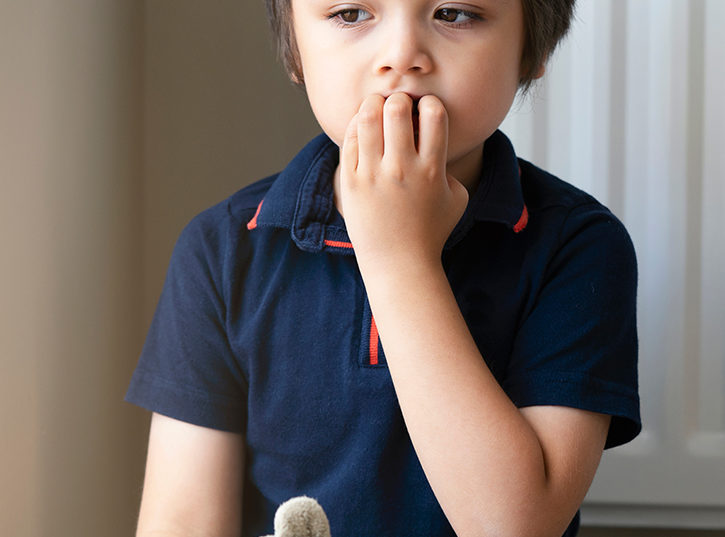Cathy Creswell, Polly Waite and Jennie Hudson have written the first Practitioner Review for JCPP in 2020. The researchers first describe how anxiety disorders might develop and be maintained, and then focus on the various assessment and treatment considerations for children and adolescents with anxiety disorders.
They first explain that anxiety disorders should be routinely assessed using valid and reliable interview-based and questionnaire-based measures of anxiety which also detect common co-morbid problems. To obtain accurate differential diagnoses, mood and behaviour disorders and the risk of suicide and self-injury, should be assessed. To ensure that clinicians fairly balance caregiver and self reports, Creswell et al. recommend that clinicians use the ‘OR rule’ proposed by Comer & Kendall.1 Here, clinicians should include clinically interfering symptoms that are reported by either the young person or the parent when constructing the diagnostic profile.
Moving on to treatment, cognitive behavioural therapy (CBT) for anxiety has consistently shown substantial benefits over waitlist controls across various meta-analyses.2 Unfortunately, many have found that the relapse rate after CBT is high.3 In addition, Creswell and colleagues point out that we still do not fully understand which components of CBT programmes are the most effective. The data available thus far suggest that exposure tasks might accelerate improvements in symptom severity and global functioning, while relaxation training has a lesser effect.4 According to Creswell et al., we should now identify precisely which strategies promote new learning through exposure, in young people, across the different stages of childhood development.
Worryingly, Creswell et al. highlight the extremely low rate of service use by affected children and adolescents in many countries, including the UK, USA and Australia. One study found that as few as 2% of children with anxiety disorders receive CBT.5 It thus seems that tools are urgently needed to help identify young people who might benefit from professional support to overcome anxiety problems. The researchers suggest that a stepped care model might help increase access to evidence-based interventions. Here, the least costly intervention is delivered initially; those who do not respond to this first step, move on to a more intensive intervention.6 The researchers explain that work is now needed to refine the stepped care model before it can be rolled out. Specifically, we need to (i) maximise the cost-effectiveness of each step, (ii) identify the optimal staff and setting and (iii) clarify the needs of children and adolescents who do not benefit from the first step.
Overall, it seems that while the prevalence of anxiety disorders in young people is increasing, access and uptake of evidence-based treatments remains low. Creswell and colleagues thus propose a number of lines of research that should be undertaken to improve on the current situation. For example, experimental studies are needed to determine the maintenance mechanisms of anxiety disorders and how they might change across childhood development. Large studies are also needed that examine the predictors, mediators and moderators of treatment to help optimize treatment outcomes. Ultimately, the hope is that treatment approaches move away from a “one-size-fits-all” model and that personalized care strategies are developed.
Referring to:
Creswell, C., Waite, P. & Hudson, J. (2020), Practitioner Review: Anxiety disorders in children and young people – assessment and treatment. J. Child Psychol. Psychiatry. doi: 10.111/jcpp.13186.
References:
1Comer, J.S. et al. (2004), A symptom-level examination of parent-child agreement in the diagnosis of anxious youths. J. Am. Acad. Child Adolesc. Psychiatry. 43: 878–886. doi: 10.1097/01.chi.0000125092.35109.c5.
2James, A.C. et al. (2013), Cognitive behavioural therapy for anxiety disorders in children and adolescents (Review). The Cochrane Library, 6: CD004690. doi: 10.1002/14651858.CD004690.pub3.
3Ginsburg, G.S. et al. (2018), Results from the child/adolescent anxiety multimodal extended long-term study (CAMELS): primary anxiety outcomes. J. Am. Acad. Child Adolesc. Psychiatry. 57: 471–480. doi: 10.1016/j.jaac.2018.03.017.
4Peris, T.S. et al. (2015), Trajectories of change in youth anxiety during cognitive-behaviour therapy. J. Consult. Clin. Pyschol. 83: 239–252. doi: 10.1037/a0038402.
5Reardon, T. et al. (2019), The utility of the SCAS-C/P to detect specific anxiety disorders among clinically anxious children. Psychological Assessment, 31: 1006–1018. doi: 10.1037/pas0000700.
6Bower, P. et al. (2005), Stepped care in psychological therapies: Access, effectiveness and efficiency – Narrative literature review. Br. J. Psychiatry. 186: 11–17. doi: 10.1192/bjp.186.1.11.
Glossary:
Exposure tasks: many people avoid feared objects, people or situations. During exposure therapy, the patient is exposed to the anxiety source or its context in a safe and controlled environment. In this way, the patient can gradually and gently become accustomed to the situation that triggers the anxiety and can confront their fears.

